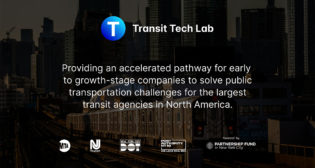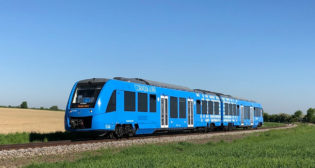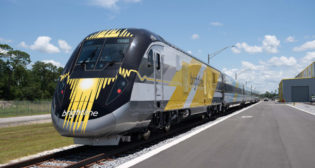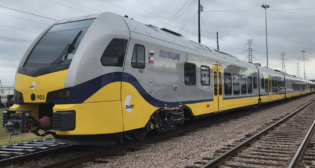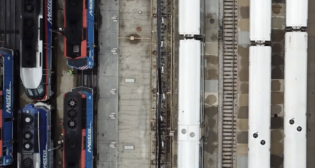
Caltrain to Pilot Stadler BEMU
Written by Marybeth Luczak, Executive Editor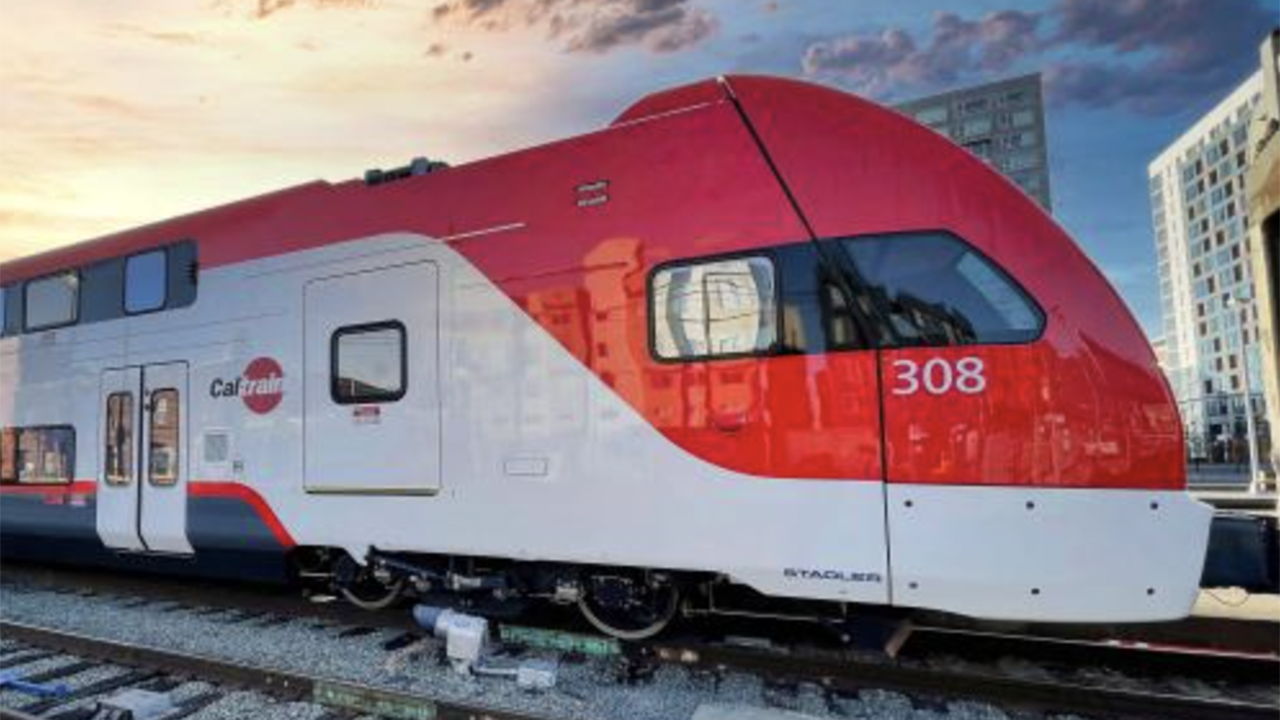
Caltrain’s bilevel EMUs from Stadler operated under power from the overhead contact system (OCS) for the first time this spring. Earlier this month, the Caltrain Board approved exercising the options on its Stadler contract for four more EMUs. The commuter railroad will now order a Stadler battery-equipped EMU. (Caltrain Photograph)
Caltrain will exercise a contract option with Stadler to purchase a battery-equipped electric multiple unit (BEMU) train comprising three passenger cars and one battery-head housing the battery and power equipment.
The California Transportation Commission on Aug. 17 approved the allocation of funds from an $80 million California State Transportation Agency grant for one BEMU; testing at the Transportation Technology Center in Pueblo, Colo.; and upgrades to the San Jose Central Maintenance Facility and Gilroy layover and station area to facilitate charging and maintenance, Caltrain reported.
The current demonstration plan will have the “first-in-the-nation” bilevel BEMU charge while in operation between San Francisco and San Jose, when the route is electrified in 2024, and then use battery power to run on the non-electrified route between San Jose and Gilroy, with intermittent demonstration trips to Salinas, according to the California commuter railroad. The goal, it said, is to “show successful service operations and learn from the implementation to provide a roadmap for future BEMU operations and procurements,” and ultimately “lead the way for Caltrain to operate a fully zero-emission service in the future.”
The train will go into operation after additional testing and certifications from regulatory agencies, the commuter railroad said.
If successful, BEMUs could replace aging diesel locomotives on non-electrified tracks at Caltrain. “The benefits of this would not only be a reduction in greenhouse gas emissions and improved air quality, but also significant service upgrades,” Caltrain said. “This includes potential improved service times to Gilroy resulting from better performance of the BEMU compared to diesel locomotives, improved travel times on the entire corridor, and decreased service costs resulting from removing diesel locomotives from service, and increased reliability should overhead power systems fail or utilities experience outages.”
Caltrain is due to launch electrified service in fall 2024, which is two years later than planned. The railroad’s $2.4 billion electrification project will upgrade and electrify its double-track system from the 4th and King Station in San Francisco to the Tamien Station in San Jose. Stadler-built KISS bilevel EMUs will replace Caltrain’s existing diesel fleet. Caltrain awarded Stadler a $551 million contract in August 2016 for 16 six-car EMUs, with an option for a further 96 cars worth an additional $385 million. In December 2018, Caltrain exercised an option to extend the trains from six to seven cars, and ordered another three seven-car trains. Caltrain has received four EMUs with further deliveries expected this fall.
Caltrain on Aug. 17 reported that its Board earlier this month approved exercising options on its contract with Stadler for four more EMUs.
In the spring, the commuter railroad ran for the first time EMUs under power from the overhead contact system (OCS) between Santa Clara and College Park on the Santa Clara Drill Track; testing was to extend to the main line between San Antonio and San Jose Diridon later this summer.
“California continues to lead the transition to a clean, electrified transportation system, this time with the nation’s first battery-electric multiple unit passenger rail train,” California Transportation Secretary Toks Omishakin said. “This efficient, state-of-the-art train—made possible by an award through our Transit and Intercity Rail Capital Program—will lead to improved service for riders and cleaner air between San Francisco and Gilroy, as well as serve as a demonstration train for expanded battery-electric intercity rail service in the future.”
“We’re excited to be the first in the nation to pilot this bilevel hybrid electric and battery service to extend our zero-emission service beyond our electrified service areas,” said Jeff Gee, Caltrain Board Chair. “With the BEMU, we will not only create a more sustainable and environmentally friendly service, but also faster and more reliable travel times for riders.”
“Silicon Valley has a reputation for first-of-its-kind innovations, and our transportation sector is no different,” said Matt Mahan, Mayor of San Jose. “This project will pave the way for Caltrain to retire their diesel fleet and operate a fully zero-emission service for future generations.”
“Stadler is proud to continue our partnership with Caltrain and our shared mission of helping California provide zero emission travel,” said Martin Ritter, CEO of Stadler U.S. “With additional double-deck EMUs and this first-of-its-kind BEMU for Caltrain, Stadler is able to expand our overall portfolio for the U.S. market, especially in the zero-emission product line.”
In related developments, Stadler in February reported signing a contract with Utah State University and the ASPIRE Engineering Research Center to develop and test a multiple-unit train with battery drive for the U.S. market based on the company’s FLIRT Akku model. According to manufacturer, the aim of the project is to develop, build and test a FLIRT Akku battery-powered two-car multiple unit. Stadler’s FLIRT Akku model is a single-level, lightweight multiple-unit battery-powered train for regional transport. In cooperation with ASPIRE, Stadler said it is developing a FLIRT Akku model tailored to the American market, which “requires extensive research and development work to adapt the vehicle to the American infrastructure and national regulations.” Stadler said it is concentrating on the design and production of the train and ASPIRE is working on the development of the trackside charging infrastructure for the vehicle.
